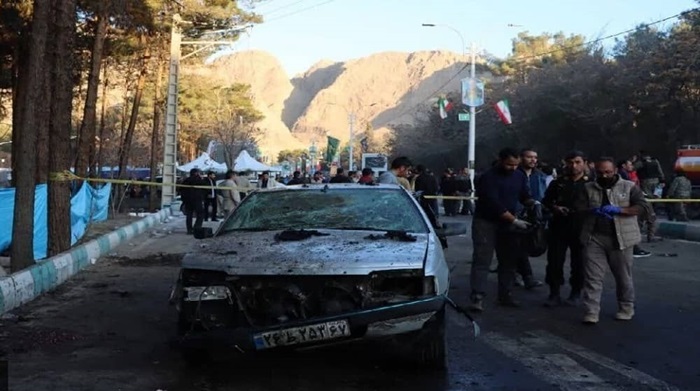
In a recent development that has stirred international attention, Iranian officials have strongly dismissed a report by The Wall Street Journal.
The report, based on an anonymous U.S. official’s statement, claimed that the United States had forewarned Iran about a potential ISIS attack in Kerman. This warning came a week before a deadly attack in the city, which resulted in numerous casualties.
The Iranian regime’s official news agency, IRNA, on January 26, refuted The Wall Street Journal’s claims. An Iranian security official suggested that any security message from the United States might have been a strategic move to avoid Tehran’s retaliation, particularly after Israel’s recent military actions in Gaza.
On January 3, a tragic incident shook Kerman when two bombs exploded near Qasem Soleimani’s grave during a memorial event, marking the anniversary of his death. Soleimani was a high-ranking commander in the Islamic Revolutionary Guard Corps (IRGC). The attack led to the loss of lives and injuries of many Iranian citizens. Initially, the Iranian regime pointed fingers at Israel and the United States for the attack. However, ISIS claimed responsibility nearly 20 hours later, a claim later confirmed by U.S. intelligence.
What #Iranian Regime’s Contradictions and Post-Kerman Bombing Power Displays Cannot Hidehttps://t.co/VOHBT3vNAj
— NCRI-FAC (@iran_policy) January 8, 2024
The Iranian public’s response to the bombings was one of skepticism and suspicion towards their own government. Many Iranians voiced their doubts on social media, questioning Tehran’s role in the incident, given its responsibility for security at the event. The conspicuous absence of high-ranking Iranian officials and Soleimani’s family members from the Kerman gathering, who instead attended ceremonies in Tehran and Iraq, fueled further speculation about the regime’s foreknowledge of the attack.
A viral video interview with a hospital director in Kerman further exacerbated the situation. The director mentioned that the hospital had been on high alert for such an incident, prompting widespread speculation about the regime’s involvement. In a desperate attempt to deflect criticism, the regime spun various narratives, including a claim by Soleimani’s daughter about a premonitory dream warning her against attending the ceremony.
The U.S. Department of State’s Principal Deputy Spokesperson, Vedant Patel, denied any intelligence cooperation or diplomatic engagement with Tehran following inquiries about the U.S. disclosure of the attack warning.
Through infiltrating the websites and servers belonging to the #Iranian regime’s Presidential Organization, @ghiamsarnegouny has gained access to internal communications of the highest officials and their decision-making processes.https://t.co/N6xoqyWr5C
— NCRI-FAC (@iran_policy) June 17, 2023
The Iranian regime’s history of involvement in terrorist activities and the fact that its Interior Minister, Ahmad Vahidi, is on Interpol’s wanted list, raise serious questions about its decision to proceed with the Kerman event despite the intelligence warning.
Historically, the Iranian regime has a record of fabricating incidents to serve its agenda. In 1994, following a bombing at the Imam Reza Shrine in Mashhad, Tehran initially blamed the People’s Mojahedin of Iran (PMOI/MEK). However, it was later revealed that the Iranian Ministry of Intelligence was responsible.
More recently, the downing of Ukraine International Airlines Flight PS752 in 2020 was described by Gholamreza Qasemian, a parliamentary official, as a false flag operation by the regime to demonstrate its retaliatory capabilities against American interests in Iraq. Such revelations cast a shadow of doubt and suspicion over the Iranian regime’s actions and narratives.

MEK Iran (follow us on Twitter and Facebook), Maryam Rajavi’s on her site, Twitter & Facebook, NCRI (Twitter & Facebook), and People’s Mojahedin Organization of Iran – MEK IRAN – YouTu
